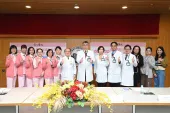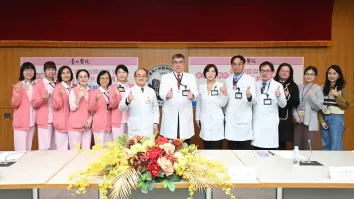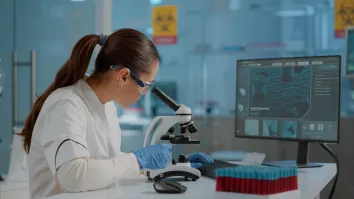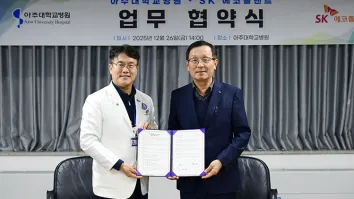Talent War vs Talent Sharing: The Future of Life Sciences Teams in the Asia Pacific
Many speak of the “war” for talent arising across the globe, including in the Asia Pacific and as it pertains to the Life Sciences industry. Whilst indeed there is a level of scarcity in certain roles and regions (though arguably public healthcare provision is much more in need than the private sector), the battle-like mentality does not take full advantage of the broader industry shift toward collaborations and alliances. According to KPMG 2018 Global CEO Survey, 61% of Life Sciences CEOs intend to work in consortia models going forward (compared to a 49% cross-industry average).
As framed in the latest KPMG Global Life Sciences’ 2030 report about capabilities, the sharing economy will dictate terms for the next generation and thus workforce shaping must leverage this trend, rather than to resist it. No Life Sciences company is too big to fail nor too small to consider the topic.
Carlo Perone, Novartis Head of People & Organization- Asia Pacific, the Middle East and Africa regions, doesn’t believe in the “talent war” concept. “There are more opportunities than threats,” said Perone. “We have millions of skilled workers in the market; just look at the number of new graduates each year from developing countries like China and India. It’s not just about the right people, but also the right mindset.”
To illustrate, Perone’s preferred interview screening technique is looking for candidates who will support a productive and inclusive workplace. In gathering insights from Life Sciences executives (business and HR), we observed there is a fair amount of consensus about the capabilities needed for the future as well as the challenges with accessing and harnessing them. Ultimately these key themes and capabilities are summarised as follows:
1. Patient Initimacy
The volume of healthcare information available to patients has risen exponentially over the past decade, with 1 in 20 web searches being health-related queries. In much the same way as consumers make informed purchasing decisions, so too are patients increasingly taking greater control over their own care and advice. This brings huge opportunity for Life Sciences companies to not only connect with patients directly but also to build better insights into the customer experience.
Teams will need to move beyond linear processes into journey mapping and reframing the conversation around a human-centric endeavor, with emotion at the heart. Such a shift could reduce the number of unsuccessful product launches and better support Life Sciences companies to move towards overall patient well-being. Celgene, as an example, asks patients suffering from Psoriasis to capture and share personal videos of their daily lives; by analyzing 2,000 minutes of footage, Celgene was able to delve deeper into the holistic patient opinions and priorities.
“There are lots of considerations about cost and effectiveness of the salesforce, but one-to-one touch is still important,” said Perone. “It’s all about the patients and being compassionate, having a purpose. Every part of our organization must understand how to bring value to the community.” At Novartis, the first week of onboarding is spent at the hospital, with doctors and patients.
“Patient intimacy necessitates a softer approach,” agreed Annie Lim, Sanofi’s Global Diversity & Inclusion Lead based out of Singapore. “This is an example of how diversity has a measurable impact on the business – only with a greater sense of openness, trust, and understanding is patient intimacy possible. We are all affected by health and care, and must demonstrate a level of empathy in our work in this field.”
Enabled by journey mapping and design thinking techniques, Life Sciences teams must learn how to infer results from more qualitative assessments. Future leaders will require technical know-how (to make use of tools) as well as the ability to engage with a number of different stakeholders (healthcare professionals (HCPs), carers, influencers, etc.) along the patient pathway.
2. Data Science Driven
The rise of smart technologies rely on a combination of wireless sensors and interconnected devices or wearables capable of talking to one another to collect information in real-time. For example, Novo Nordisk recently announced the launch of two connected insulin pens able to communicate with continuous glucose monitoring systems and blood glucose meters to offer patients a joined-up disease management solution.
Whilst such technology opens a world of potential, not least to expand the detection of responsive patient subpopulations, success lies in advanced data science tooling and capability.
To successfully capture additional market value that smart technology offers, emphasis has to be equally placed on both the front-end interface as well as the back-end systems in order to make sense of the information as a connected enterprise. Deep expertise across a range of disciplines from computer science, data analysis and visualizations, to statistics and mathematics is therefore required. As Life Sciences shifts from chemical to biological to data science, corporate involvement in shaping university programs as a talent pool can be a competitive advantage.
“Clearly businesses are grappling with the realities of the skills gap,” said Cristina Goldt, VP Human Capital Management (HCM) Product Management at Workday. “This is only being aggravated by the rapid pace of technological change and evolving nature of work.”
However, data literacy should not be reserved to data scientists alone but rather as a key tenet of the entire organization. As data proliferates, it will inevitably be democratised so as to be harnessed for multiple users across the organization – from R&D and supply chain to patient relations. The benefit here is to accelerate time to market.
Staff needs to be trained on the means and tools by which to maintain and assure the accuracy and consistency of data over its entire lifecycle. Not everyone will immediately feel comfortable with handling data in this way so there is a need to recognise this and embed a culture of willingness to learn. Supported by adequate controls, individuals should be able to practice and develop this skill in a safe environment in order to become more adept to mitigating the associated risks.
3. Extreme Partnerships
For Life Sciences leaders, the pain of investing heavily in clinical trials and product development only to launch with sub-par revenues is a common concern. Many are recognizing the need to partner, share, and collaborate in order to offset risks and to drive better outcomes for patients as well as for the business. Ever-increasingly we are seeing this as not just a strategy for competitive advantage, but as a critical means for survival.
An obvious partnership relates to the hunger for data, which has already been explored in this article.
Technology partnerships allow Life Sciences companies to accelerate digitalization and modernization without such significant investment in their own capability, platforms, and tools. The challenge here, however, is to ensure that Life Sciences companies have all of the benefits of the partnership without losing valuable insights. Many executives fear the loss of deep therapeutic expertise over time, which until now has remained one of their core strengths.
“Partnerships still have not really matured, lots of talk and everyone is on a journey,” said Perone. “Life Sciences is not as advanced as the technology sector, including the legal and contractual frameworks for intel sharing and privacy. But ultimately we need a workforce environment that fosters and encourages employees to be creative and innovative. Diversity is key in helping to achieve that.”
Takeda Pharmaceuticals stands behind the concept of grassroots experimentation and is open about how they have set up an innovation accelerator with a dedicated fund to support it. Other noteworthy examples of such innovation partnership approaches include Johnson & Johnson’s “JLABS” and more recently the Novartis Biome project.
4. Risk and Compliance Savvy
Pressure from regulators, governments, and patients themselves is growing. But the willingness to take the right risks is just as important as avoiding the wrong ones. Risk aversion does not only limit technical advances, it also restricts patient intimacy especially when your competitors are forging ahead. Asia is known for its low tolerance for risk and failure, something that perhaps needs to be looked into.
Cultivating the risk appetite stems from identifying a set of risks to be managed and mitigated across the enterprise.
Many Life Sciences companies have delegated risks to different departments – Internal Audit, Compliance, Legal, Safety and Quality. A critical first step is the ability to pull together the risks more cohesively
Just as importantly, compliance teams must become more adept at supporting commercial endeavors. Many Life Sciences companies are struggling with compliance teams that build barriers around getting closer to patients, resulting in delays of products to market and much-needed patient services and solutions that complement the therapy.
An example we observed is the behavior of the compliance team after developers finalised a therapy app with an underlying algorithm based on best practice care research for a regional salesforce. The compliance team spent six months reviewing every permutation of the algorithm to ensure no adverse regulatory impacts. A cultural shift will be required in both the way compliance is handled and the level of trust placed in technology.
“Life Sciences is a highly-regulated industry, thus compliance has been and will always remain a core value for companies in the industry,” said Lim. “There is a direct correlation between skills in diversity and risk management – the more understanding someone is of others’ perspectives, the more streamlined operations in a compliant yet innovative manner is possible. This is a key competency for Life Sciences leaders.”
Further, compliance-savvy teams are ahead of the game in terms of building up relationships with country regulators in order to educate them about upcoming therapies and service-solution combinations, anticipating regulatory challenges and advicing medical and commercial teams well in advance of launch dates.
Without risk and compliance savviness, Life Sciences companies could be left behind new competitors who are learning how to navigate and shape regulation in order to get their products piloted and into market more quickly.
One example particularly relevant in the Asia Pacific context is the concept of prescription to over-the-counter switching (for drugs) and medtech vs healthtech (for devices).
Given all of the above, there are several options to consider to future-proof your team (not mutually-exclusive):
Acquire: Traditionally, Life Sciences acquisitions have been carried out to gain physical resources, intellectual property, and customers. In the future, Life Sciences can learn from other industries by moving beyond alliances and into acquisition of capabilities such as data science. Alliances and secondments:
Several of the known industry alliances like Pfizer-Medidata have brought complementary capabilities to both parties. Such an approach is particularly appropriate for finite projects, offering a rich source of talent without the costs and obligations of permanent hiring. The key is to build more structured programs that transfer capabilities from the alliance partner back into the Life Sciences company, working jointly on agile-based projects where exposure to new mindsets and skills is part of the benefit.
Whilst the permanent employee model persists, there is also great potential to second employees to companies in other industries to learn and absorb new ideas, skills, and culture, possibly as part of a two-way movement taking on secondees from partner companies in return. This has been done previously between companies in other sectors, such as between Consumer and Automotive and across departments such as Marketing and Strategy to enable high potential employees to secure new capabilities like competitive pricing, scenario planning, and market positioning. Not only does this act as a capability build, but also as a retention tool for top talent.
Re-skilling (beyond training): Often for those who have held a certain role or job title for a whilst there is a real cultural adjustment needed to gain acceptance for a sideways move.
The behavioral and cultural change efforts required to support employees on this journey should not be overlooked. Innovation hothouses: These provide deep, short-term immersion for high potential employees with an intellectual stretch to accelerate development. ViiV Healthcare, part of GSK, has set up what it calls the “hive” – a specialist innovation unit dedicated to addressing HIV care needs. The hive is a cross-functional affair, offering employees intensive, three-month secondments of highly-focused work.
In the future, we expect to see a growing number of platforms connecting people to tasks – platforms that may well be set up and run by Life Sciences companies. A number of Life Sciences companies have already gone some way down this road, fostering networks and pooling the right people for projects and initiatives from within and outside of the organization. Some of these individuals may not even come from the sector, whilst others may be recent retirees who are interested in lending their experience on a part-time basis.
“With a strong foundation in place, we can begin to foster a true marketplace that helps employers find internal talent and create development opportunities for employees,” agreed Goldt. “Ultimately our goal is to enable talent optimization for our customers, regardless of where the talent is, by delivering a talent marketplace that easily connects employees and candidates with employers in need of skilled workers.”
“Most companies have the same amount of talent, so it’s all about leverage,” said Perone. “We do not really know what will happen in the Life Sciences industry, so we must remain agile. I am interested in profiles of people who have lived in different countries, who are comfortable in the unknown, who are curious and humble to learn. The only thing I do not tolerate is intolerance.”



















 Advertise
Advertise





